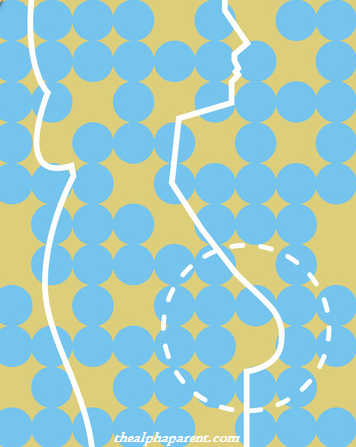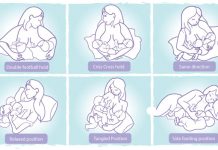
1. Feeling Letdown: Fifty per cent of women will know the moment it happens, the other 50 per cent won’t (Fredregill 2004).
2. Leaking Littles: Large breasts actually leak less than smaller breasts (Fredregill 2004).
3. Righty FTW: Milk output is often greater from the right breast versus the left breast (Riordan 2008), even though right-handed mothers instinctively use the right-hand to position the baby and breast, thereby making it easier to feed from the left breast.
4. Superior Sugars: Human milk gets more of its energy content from lactose than any other animal milk. Lactose gives your milk a sweet taste and won’t cause diarrhoea, as the processed sugars in formula often do.
5. Boner: Weaning stimulates your body to increase bone density, meaning your post-lactation bones will be stronger than they would have been if you had never breastfed at all! Nifty. (Williams 2013).
6. Camouflaged Cups: Cotton tops and dresses with prints are the best clothing for the nursing mother. Prints tend to hide the telltale bull’s-eyes of breastmilk leakage that solids only emphasize.

7. Mammary Lane: From puberty to death you can produce milk – yes, that long. Menopause is no obstacle.
8. Subsequent Servings: If you breastfed your first child for over 6 months, with your next child your milk is likely to come in a day or so earlier than before – AND your supply is likely to be better! (Cave and Fertleman 2012).
9. Sibling-Friendly Squirting: Over-supply is more likely to occur if your children are closely spaced. See: ‘What No One Tells You About Child Spacing’.
10. Freezing Fail: It’s better to store breastmilk in the fridge than the freezer where possible. This is because the antimicrobial properties of human milk are better preserved with refrigeration (La Leche League 2012).
11. Farewell Freebie: As your child is weaned, your breasts produce colostrum again, so that the child receives an extra dose of antibodies before moving on (Giles 2003).
12. Telepathy Tits: Breastfeeding has enabled humans to communicate on a higher, more complex level. Higher-order thinking – including speech and learning – grew out of lactation! (Williams 2012).

13. Lactation Launch: When a baby nuzzles his mother’s breast prolactin is released into the mother’s bloodstream. It is then detected on a sensitive area on each milk-making cell, switching it on. Cells that haven’t been fully primed in this way will start to shut down – and they can’t be re-activated until the next pregnancy. Breasts which only have a few cells switched on are set up for minimum milk production only (Rapley and Murkett 2012).
14. Placenta Post: Hormones called placental lactogens talk to the breast during pregnancy when it is building the structures it will need for making milk. One of the messages sent by the hormones is whether you are going to nurse a baby boy or baby girl (see ‘Timeline of Breast Changes in Pregnancy’).
15. Bothersome Bottles: Contrary to popular belief, breastfeeding is actually LESS tiring for babies. One of the reasons is that a bottle-feeding baby has to pause frequently to take a breath, whereas a breastfed baby can breathe while he sucks (Rapley and Murkett 2012).










